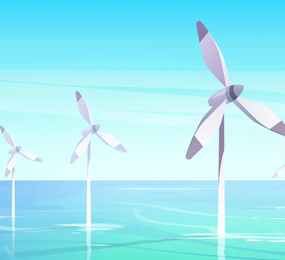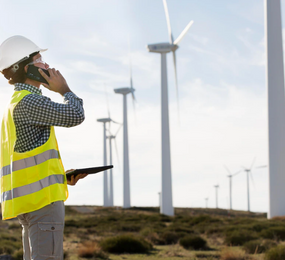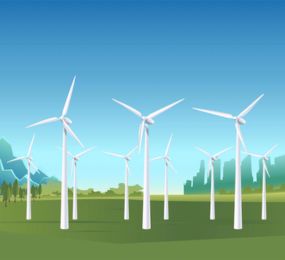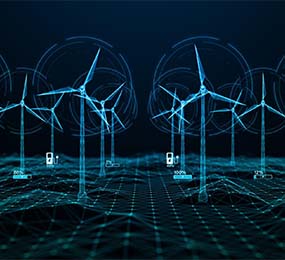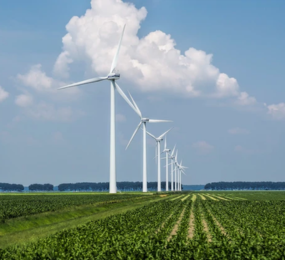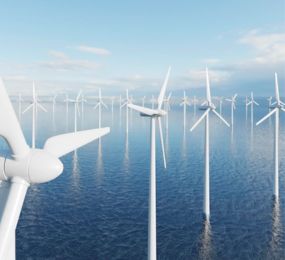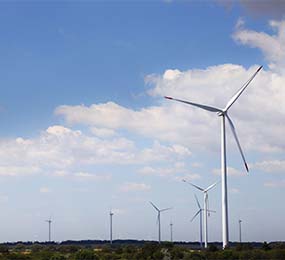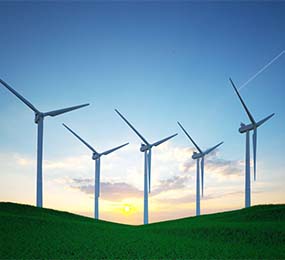The wind energy industry is undergoing a profound transformation, driven by the integration of digital technologies. Digital wind farms are revolutionizing the way wind energy is harnessed, optimized, and managed. In this article, we explore the current state and future prospects of the digital wind farm market. From advanced data analytics to artificial intelligence and Internet of Things (IoT) connectivity, we delve into the exciting possibilities that digitalization brings to the wind energy sector.
<iframe width="560" height="315" src="https://www.youtube.com/embed/nU3A_F2m1AQ" title="YouTube video player" frameborder="0" allow="accelerometer; autoplay; clipboard-write; encrypted-media; gyroscope; picture-in-picture; web-share" allowfullscreen></iframe>
Digital wind farms leverage cutting-edge technologies to enhance performance, improve operations, and maximize energy production. Through the use of sensors and data collection devices, wind turbines gather real-time data on wind conditions, turbine performance, and grid integration. Advanced analytics processes this data, providing valuable insights for optimizing turbine output, reducing downtime, and minimizing maintenance costs. Digital wind farms have already demonstrated significant improvements in efficiency, reliability, and overall profitability.
Key Digital Technologies Driving the Market
Several digital technologies are driving the growth of the digital wind farm market:
1. Data Analytics: Advanced data analytics algorithms enable wind farm operators to extract valuable insights from large volumes of operational data. These insights help optimize turbine performance, predict maintenance needs, and enhance overall asset management.
2. Artificial Intelligence (AI): AI algorithms are capable of learning from data, enabling wind farm operators to make more accurate predictions and optimize operations. Machine learning models can forecast energy production, detect anomalies, and automate decision-making processes.
3. Internet of Things (IoT) Connectivity: IoT devices enable seamless connectivity and communication between wind turbines, sensors, and control systems. This connectivity allows for real-time monitoring, remote control, and proactive maintenance, ensuring optimal performance and reducing operational risks.
4. Digital Twin Technology: Digital twin technology creates virtual replicas of physical wind farms, allowing operators to simulate and optimize performance under various conditions. Digital twins facilitate predictive maintenance, scenario analysis, and the development of innovative solutions.
The digital wind farm market is poised for significant growth in the coming years. As the renewable energy sector expands and governments worldwide increase their focus on clean energy targets, the demand for digital solutions in the wind industry will escalate. Advancements in AI, machine learning, and cloud computing will enable more sophisticated data analysis, resulting in better performance optimization, increased energy production, and reduced costs. Moreover, the integration of wind farms with smart grids and energy storage systems will further enhance the flexibility and reliability of wind energy generation.
Benefits and Implications for the Industry
The adoption of digital technologies in wind farms brings numerous benefits to the industry:
1. Improved Efficiency: Digital wind farms optimize turbine performance, resulting in increased energy production and higher profitability for wind farm operators.
2. Enhanced Asset Management: Real-time monitoring, predictive maintenance, and remote control capabilities enable proactive asset management, minimizing downtime and reducing maintenance costs.
3. Cost Reduction: Digitalization allows for better resource management, optimized maintenance schedules, and efficient energy grid integration, leading to overall cost reductions.
4. Environmental Sustainability: By maximizing energy production and reducing operational inefficiencies, digital wind farms contribute to a cleaner, greener future.
The digital wind farm market is transforming the wind energy industry, enabling greater efficiency, enhanced asset management, and improved sustainability. Through the integration of data analytics, AI, IoT connectivity, and digital twin technology, wind farm operators can optimize performance, increase energy production, and reduce costs. The future of digital wind farms holds immense potential as advancements continue to drive innovation and create a more sustainable energy landscape.
https://youtu.be/nU3A_F2m1AQ, explore the present and future of the digital wind farm market.
To register or learn more about the Forum please check here: https://bit.ly/430gLPP
For more information and group participation, contact us: [email protected]


